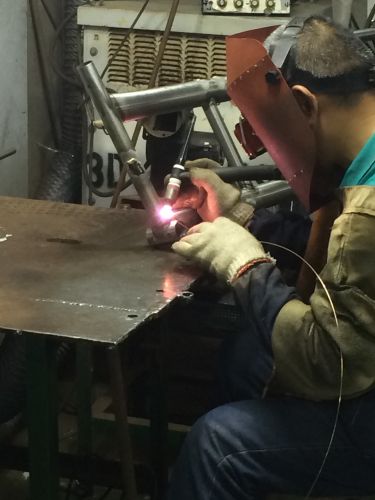 |
| A Getty Image |
One of the gusts in the storm of the opening days of Trump's second term is a round of tariffs on goods from Canada, China and Mexico.
Yesterday, the charges against Canada and Mexico were paused for 30 days, but the ones aimed at China are still in effect. Meanwhile, the United States Postal Service rescinded its announcement that it would cease accepting packages coming inbound from China and Hong Kong.
So what does all of this have to do with the cycling world?
Well, the effects on levies on Chinese goods--imposed on top of the duties and fees already charged--seem obvious at first glance. About 87 percent of the bicycles sold in the United States are made in that country. So are most accessories and helmets, and many items of footwear and clothing. But those all of those items still account for only half of the money spent on bicycle-related goods in the US, mainly because most of the bikes are for kids or low-end models for adults. While some carbon and other high-cost frames are made in China, the majority come from Cambodia, Vietnam and other countries. "The specialty bike industry has moved out of China," one manufacturer's representative declared. "Any one that is still there has only themselves to blame."
Even so, many bikes and e-bikes that are "made in" Vietnam, Cambodia or even North America or Europe are built around frames that are made in China to be finished and assembled where they are "made." And even if the frames are welded and painted in the US, there's still a good chance that some parts are made in China. So even if the manufacture of mass-market bikes returns to these shores (most of the bikes, or more exactly, frames built in the US are custom or limited- production), whether or not the tariffs will apply isn't clear.
As for our neighbors to the north and south, together they account for about a thirtieth of the sales volume of bikes and bike-related products from China sold in the US. Spinergy has been making wheels for bicycles (and wheelchairs) in Mexico for at least three decades; other companies, like Yakima, also made products there but have since shifted production elsewhere. But there hasn't been significant bicycle production in the country for decades; its best-known brand--Windsor--is now made in Asia and sold via eBay and direct-to-consumer outlets. Most of Canada's sales in the US come from companies that operate on both sides of the border; thus, a bike coming crossing the northern border is likely to have come from elsewhere.
There are rumors that Trump will target the European Union next, but that--and retaliatory tariffs, if the EU decides to impose them--would be attached mainly to automotive and agricultural products, two categories in which the US is running a trade defecit.
Does all of this mean that you should run out and buy a new bike or helmet or stock up on parts you might need? I don't know. And what is the Fake Tan Fuhrer's rationale for the tariffs? Fentanyl imports and illegal immigration. How those things will be affected, I also don't know. Nor do better minds than mine.





























